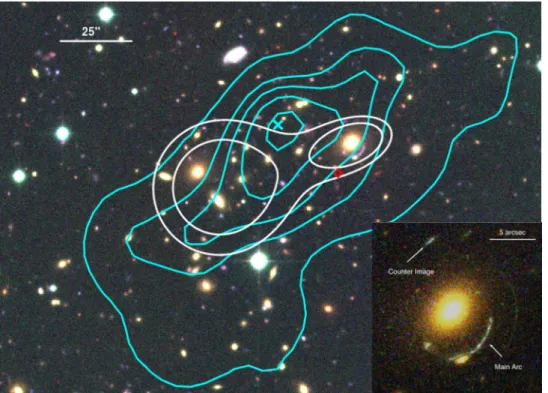Dark matter baryons separation at the lowest mass scale: The bullet group
Texto completo
Figure



Documento similar
3. Estimate the physical properties of the system: mass density slope of the lens galaxy γ, projected dark matter mass fraction within the Einstein radius M dark /M lens ,
Mass scale sets radius of tangential critical curve, which is approximately the location of tangential arcs.. 3 dimensional mass density
There is already a considerable amount of evidence that bright galaxies contain large amounts of dark matter, often ten times more than the mass of all their stars put together..
With regard to bone parameters it can be seen that there is a clearly significant difference in the experimental group both in terms of degree of bone mass loss, significantly
The remarkable selectivity, stability, and high current density of CoFePB, in contrast to state-of-the-art catalysts based on platinum-group metals (PGM), is an important step in
In the context of galaxy formation, two fundamental properties are given by the underlying dark matter structure: the distribution of their masses at a certain redshift as the halo
The lightest neutralino, ˜ χ 0 1 , is usually assumed to be the LSP, unless R-parity is not conserved, because it is the only MSSM particle which can make a good cold dark
We use Lenstool to model the gravitational lensing, which is near to a “fold arc” configuration for an elliptical mass distribution of the central halo, where four images of the